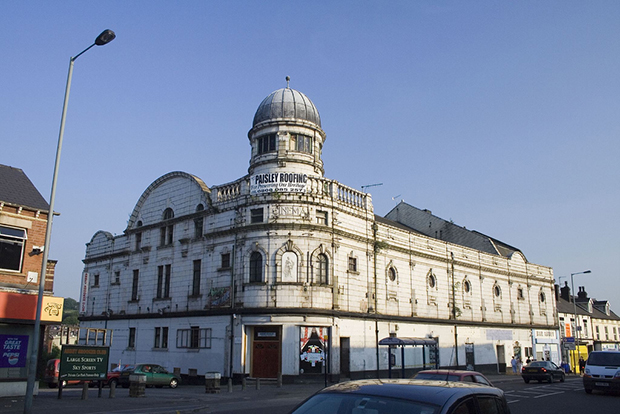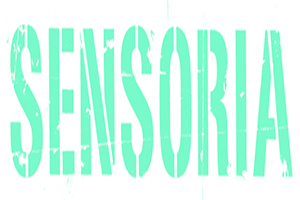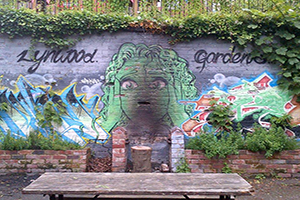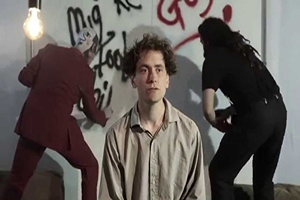
SensoriaPro returned to the city for two days of stimulating discussions about digital arts, music and the creative industries. The ‘Pro’ event is a more pragmatic, industry-aimed window within Sensoria Festival’s wider programme. Past years have provided sessions on how to score trailers and video games, as well as how to operate on a practical level within the industry. This year adopted a broader approach, still very much rooted in the everyday processes behind being creative, but also of interest to those who just consider themselves observers, consumers or fans.
The first day had, among many other things, a running theme of the hurdles faced by those who host and promote live music, whether in venues, festivals or as part of the imposing task of building a city-wide scene. The first panel of the day, chaired by musician and journalist John Robb, looked at the plight of independent venues in the UK. James O’Hara, owner of Picture House Social, talked about the preventative number of restrictions faced by those who want to repurpose old buildings as music venues, and we learned that unsurprisingly, cinemas built in the 1920s don’t really have enough toilet facilities for 200 or so drunk gig-goers.

Tim Arnold, founder of campaign group SaveSoho, also spoke about his experiences lobbying councils and politicians, and the frustrating lack of understanding he came up against. He spoke about the commercial mindedness of the authorities, and the fact that live music and the spaces that it inhabits are not treated with the same level of concern as those of the art gallery sector.
Beverley Whitrick, strategic director of The Music Venue Trust, provided a small level of optimism. Although there is a culture of demonisation coming from the authorities about live venues, and there is a shocking real lack of common-sense regulation on the planning side, she said that “some developers are looking to put meaningful new venues in their developments to make up for those lost”.
The What Makes A Music City? panel found themselves tracing similar arguments from a different angle. Chaired by journalist and DJ Dave Haslam, the participants discussed the things that allow or prevent music to thrive in a city. Qualities identified ranged from a hungry audience (of which it was agreed there certainly is) to enough spaces to record and perform (which it was agreed there certainly are not).
The main departure from the day’s potentially demoralising thread was 65daysofstatic’s talk about a recent commission to soundtrack hotly anticipated game No Man’s Sky. It provided an opportunity to unashamedly use phrases like “infinite video game” and “soundtrack for an imaginary space scape”.

No Man’s Sky will be the first ever theoretically infinite video game, using algorithms and mystery maths in a revolutionary way to completely randomise every game playing experience. Thus the soundtrack has to be equally complex and it sounds brain-stretchingly exciting. Paul Wolinski and Joe Shrewsbury from the band talked through the seemingly impossible task of composing a soundtrack that responds to “a story that doesn’t exist yet”.
Day Two was more geared towards artists’ rather than venues’ concerns. Journalists including Pitchfork’s Laura Snapes and freelancer David Stubbs discussed the best (and worst) ways to contact the music press, right down to the details of wording an email. Snapes in particular praised the end of a culture of blogmania, where being the first to write about an emerging artist is no longer the primary concern for most publications. Instead, it’s more important to “back the right horse”, even if that is a year or two after they release initial material, providing some reassurance to the musicians in the room.
A particular highlight of the programme, not least for its ‘behind the scenes’ nature, was The Anatomy Of A Music Video with Sony video commissioner Mike O’Keefe. The audience was treated to a screening of four of Sony’s recently released videos, including tracks by Peace and George Ezra. O’Keefe was refreshingly frank when it came to the details of budget, location, selecting directors and how much creative input the artist has on the final product.
The final panel of the whole SensoriaPro event was a sobering discussion of if and how royalties work for artists in 2015, chaired by music trade journalist Rhian Jones. The overwhelming message was summed up by songwriter Crispin Jones: “The relationship between artists and major labels is not a partnership”. It’s a sentiment that could have summed up a lot of SensoriaPro, which gave a thoroughly intriguing insight into the murky and tense relationships between creatives and the unavoidable systems in which they operate.
Words: Lucy Holt



